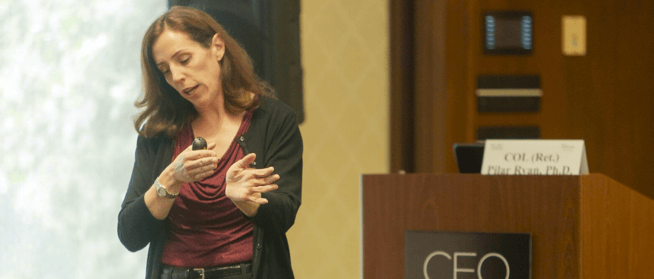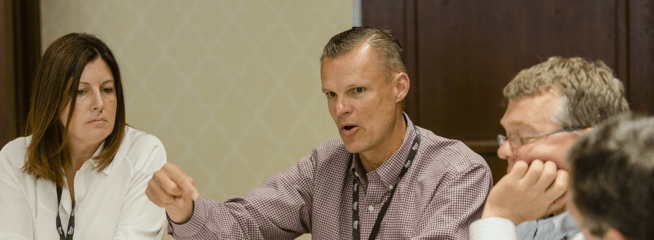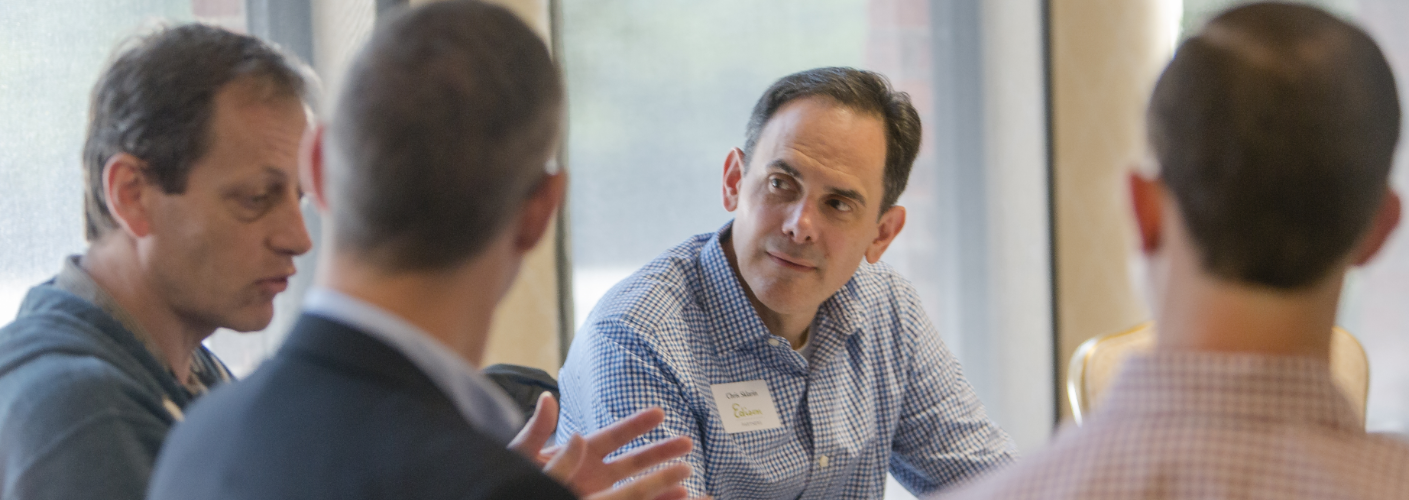What do parents do when their child grows up to be a teenager? This question, from a business perspective, is not dissimilar from asking: How does a CEO make sure company core values remain intact yet adaptable to new challenges that growth and success typically bring?
There were many great insights and takeaways that emerged during our recent CEO Summit Sausage Making session focused on how to retain entrepreneurial culture that will help get companies grow while balancing new people and ideas as the company scales. Following are the top five:
1. FIRST THINGS FIRST: DEFINITIONS
Entrepreneurial: continued innovation, agility, culture of winning, creativity, having an ownership mindset, risk taking, curiosity, collaboration.
Culture: tribal, common language, common purpose, rituals – infused with core values.
Entrepreneurial culture tends to be ambiguous and unclear, and is amplified by its amorphous nature and the fact that all CEOs must continuously invest and improve on it.
2. PURPOSE: THE WHAT AND THE WHY
The need for refining core values in order to have the right culture was noted not only by participants in this session, but also in Colonel Pilar Ryan’s leadership session where she explained the concept of “what and why” emerging as the foundational purpose.

Having a greater purpose, no matter the industry, is a key motivational factor for employees. However, there is a delicate balance to achieve success: The balance between the organization’s purpose and individual employee’s personal purpose.
Companies can align the two different purposes in various ways. For example, at Terminus, Eric Spett (CEO, Terminus) has each employee develop a personal plan and map it out to the organization as a whole. He did note that this method may be harder to execute for a much larger company, but the core idea remains the same across all companies of varying shapes and sizes.
3. COMMUNICATION: BUILDING TRUST
Open communication emerged as the “glue” in all discussions around entrepreneurial culture. Hamed Shahbazi (CEO, Tio Networks) noted that this was key in managing the difficulty of building and making culture. James Green (CEO, Magnetic) mentioned how, especially after a massive M&A, the ability to ask questions and not blame anyone for their opinions was crucial. All CEOs agreed that thoughtful discussions and enabling communication channels helped to build trust internally.

Digging deeper on the topic of communication, Rick Auletta (former CEO, Softgate) shared a thought-provoking idea from his wife, “The difference between strategy and vision is head versus heart. Culture is in the heart, and you really need to talk to employees’ hearts.”
4. HIRE THE RIGHT PEOPLE
Looking outward from the topic of internal communication, Joe Wald (CEO, Clearpool) remarked on the fundamental importance of aligning the internal culture with external value proposition in order to build out the business which led to a discussion on combining the ‘cynicism vs. skepticism’ difference along with the external expectations, noting that CEOs should first make sure they have the right team with the right culture fit in the new growth direction.
But what is the “right team?” James Green suggested not hiring based on talent only in order to get the right people on board; rather, hiring after really understanding what you as the CEO and the rest of the company want and need.

Nick Lantuh (Edison Director Network member) recommended hiring people who hustle with a “you can do better” mentality – people who will not rest on their existing laurels. He then followed up with the advice that this can sometimes be toxic without a good-tempered balance, and that toxicity also needs to be managed. On internal team management, another idea shared was to shift employees around on various teams to help diffuse diverse perspectives while at the same time encourage bonding and avoid having too many all-stars crowded in a single team.
5. ORGANIZATIONS MIRROR THEIR LEADERS
CEOs also observed their own influence, both explicit and implicit, on their team. An organization as a whole must have good self-awareness, but for a CEO, he or she must acknowledge and understand that ultimately, organizations mirror their leaders. Various session participants shared their leadership styles and corresponding company cultures with great stories, including Kris Snyder’s effective 90-minute “commit and deliver” discussion, Jeff Kozloff’s (former CEO, Verilogue) anecdotes on staying truthful to yourself, and Diego Pantoja-Navajas’ (CEO, Logfire) reinvention analysis, recognizing the need for constant reinvention of self and the culture as a whole.
Lively discussions and trading of war stories continued well after the session, and by the end of the summit, the CEOs left the grounds of West Point with more food for thought to continue growing their businesses and leading their teams successfully.


